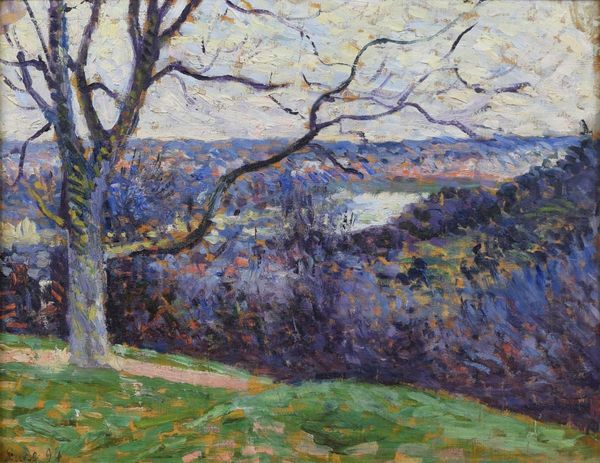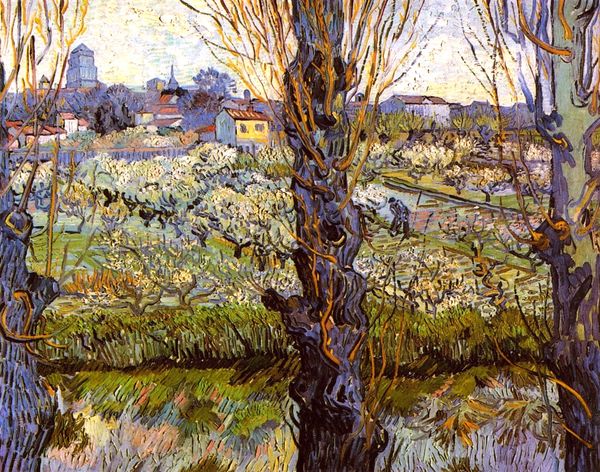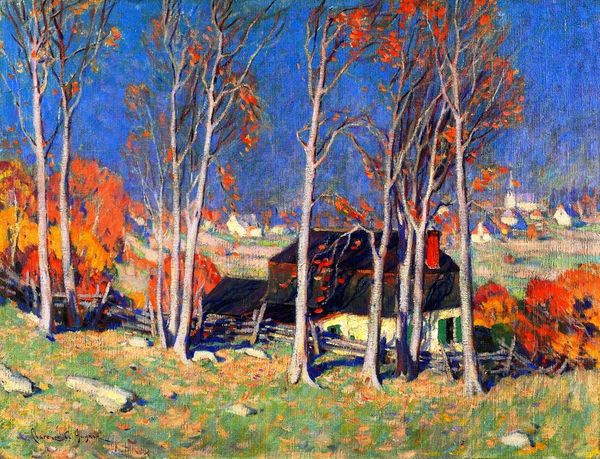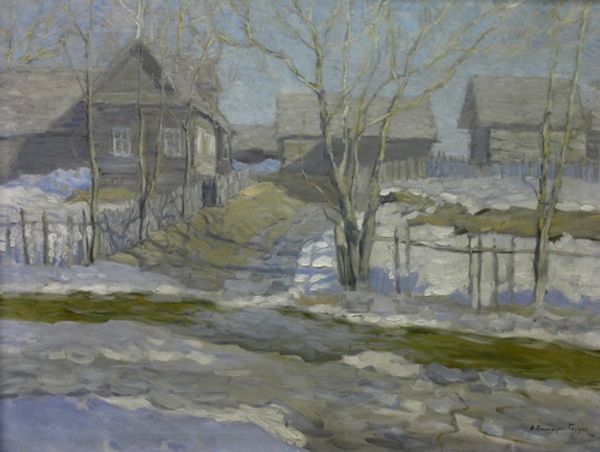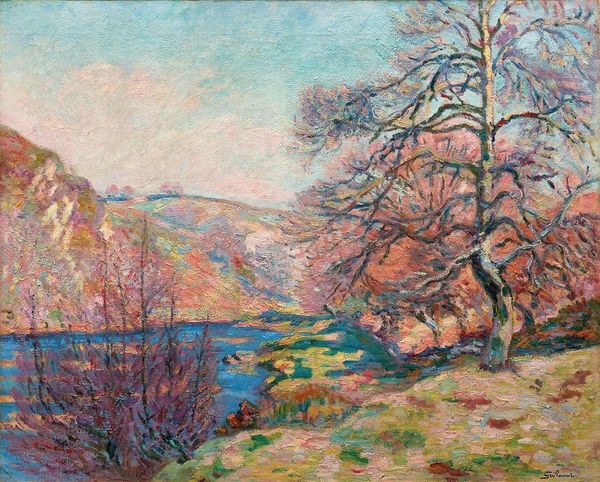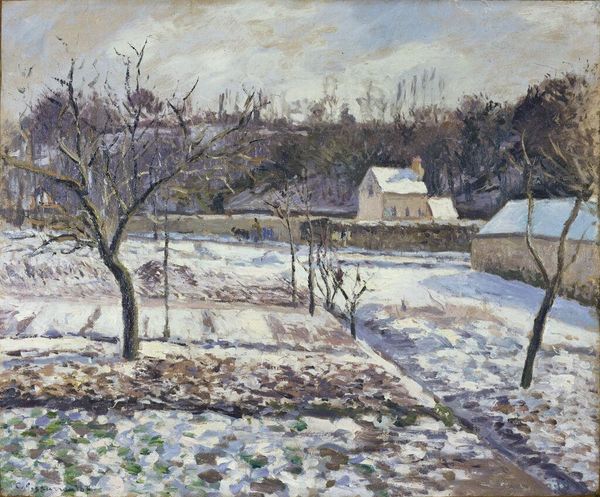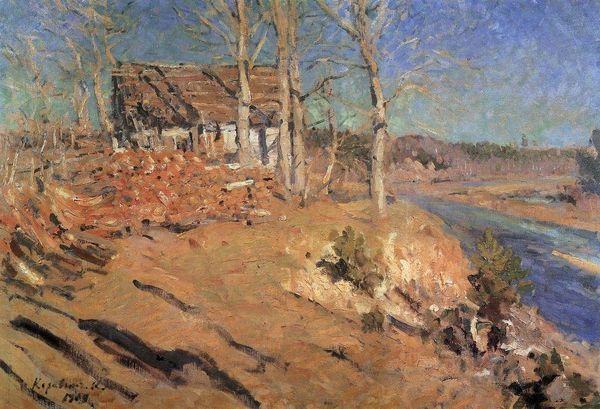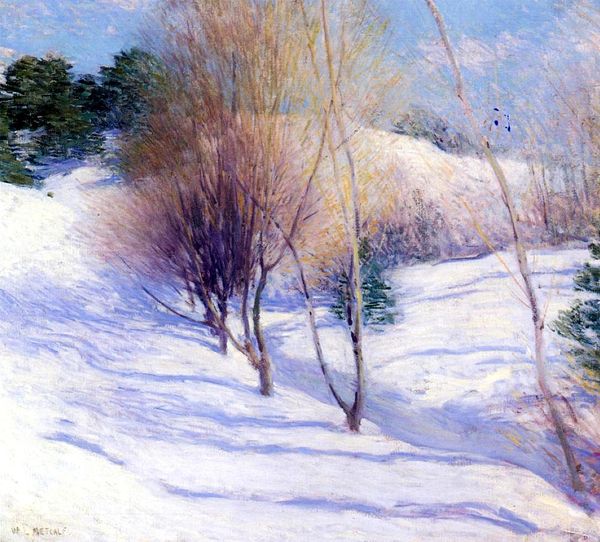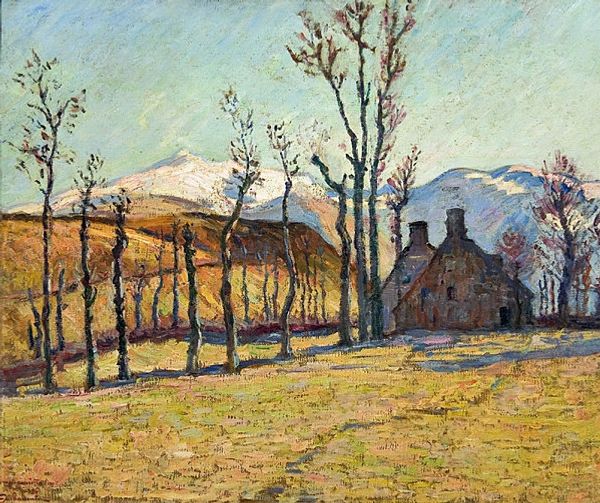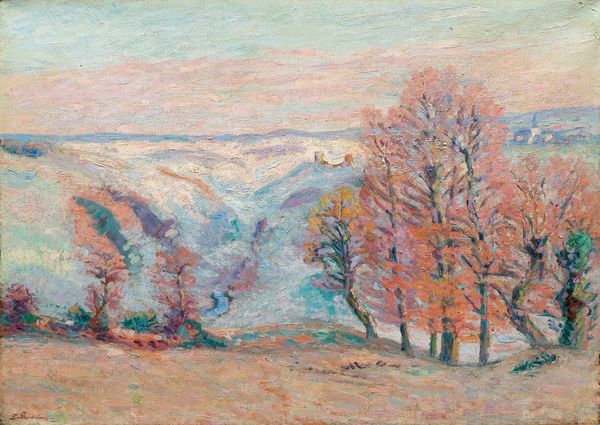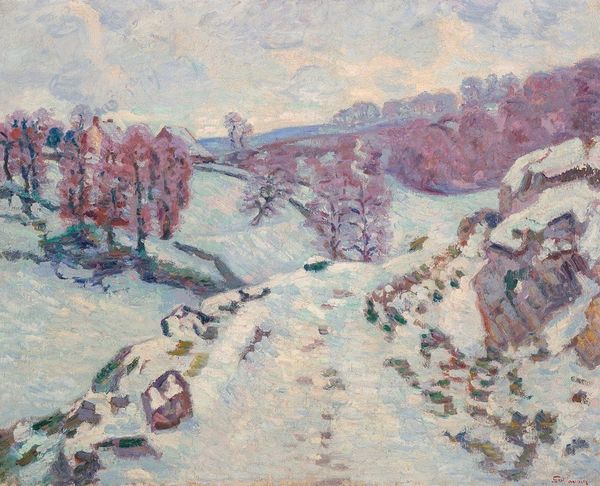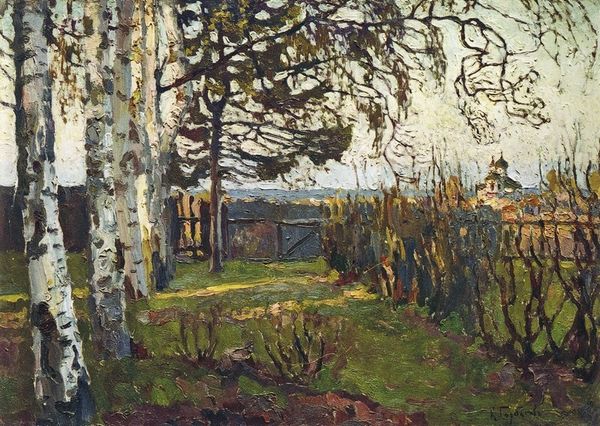
Copyright: Public domain
Gustave Caillebotte captured this winter garden scene using oil paints in Petit Gennevilliers, in a painting now held in a private collection. The stark trees, stripped bare, dominate the view; their branches reaching like fingers towards a muted sky, they speak to a time of dormancy and anticipation. The motif of bare trees, a symbol of winter’s hold, appears across cultures. From the Norse Yggdrasil, a cosmic tree linking realms, to Christian iconography where the barren tree signifies the time between crucifixion and resurrection, it carries deep cultural weight. In medieval art, bare trees often evoke melancholy, a visual echo of loss. These leafless branches might stir within us a sense of the subconscious cycle: death preceding renewal, despair paving the way for hope. These natural forms, so often charged with emotional significance, continue to evolve. This cyclical progression allows us to recognize the bare tree's poignant beauty, acknowledging the transience and the promise inherent in its stark silhouette.
Comments
No comments
Be the first to comment and join the conversation on the ultimate creative platform.
